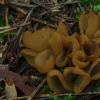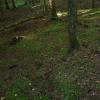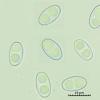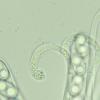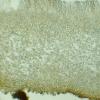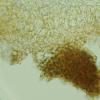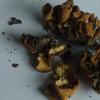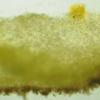
31-12-2025 19:27
Collected from loamy soil, at waterside (completel

30-12-2025 16:44
Pascal DucosBonjour,Une anamorphe rose stipitée, très nombre

30-12-2025 17:14
 Bernard CLESSE
Bernard CLESSE
Bonjour à toutes et tous,Pourriez-vous aider Albe

29-12-2025 10:15
Hulda Caroline HolteHello, I found and collected this propoloid ascom

30-12-2025 09:04
Hello.A Pyrenomycete sprouting sparsely but very d

29-12-2025 17:44
Isabelle CharissouBonjour,J'aimerais savoir si d'autres personnes au

12-11-2021 00:03
Lepista ZacariasHi everybody,A week ago in my fiels trip I noticed
Spore measurements (spore print in water):
(10) 10.5 - 11.9 (14) × 6.2 - 6.9 (8.8) µm
Q = (1.5) 1.6 - 1.78 (1.8) ; N = 20
Me = 11.2 × 6.6 µm ; Qe = 1.7
Tips of paraphyses up to 6 µm wide.
I tried to figure out the species with the aid of the Otidea monograph but didn't come to any certain conclusion. My best guess is O. nannfeldtii and second one O. formicarum.
O. nannfeldtii apparently likes to grow on nutrient-rich, often calcareous soil. This place seemed to be acidic though, not nutritious.
O. formicarum typically grows on old ant hills but apparently can also grow on just needle debris. Maybe the dark warts on the outer surface speak against it? I haven't seen any pics or descriptions that include them for that species.
The last two microphotos are from a dried fruitbody in 3 % KOH.

I think the ectal excipulum (cell walls) became yellow in KOH, did you consider O. tuomikoskii? In some collections, this reaction can disappear again in ca. 20 seconds, in others it stays. Also the intensity and placement of the yellow staining is variable. In nannfeldtii the surface exudates turn reddish brown, and it should have two-layered medulla (although I have a DNA-confirmed collection of nannfeldtii with 1-layered medulla too).
Cheers,
Viktorie
Because of the small size and lack of noticing the yellowing, I didn't consider O. tuomikoskii but with this new info I think you are correct! The ecology would also fit better, this one is apparently much more common and less demanding of habitat that O. nannfeldtii.
Thank you.



